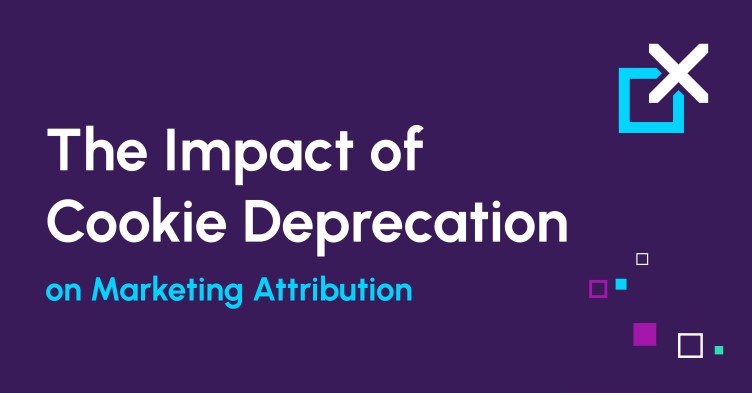Let’s take a trip down memory lane, back to 2020, when Google announced they will deprecate third-party cookies by the end of 2021 (now 2024). Not long after, Apple announced it was going to limit the use of its mobile device ID (IDFA) across its iOS applications. And now, we find ourselves right on the precipice of these major changes to marketing attribution. Brands globally have relied on the identifying traits allowed by third-party cookies to shape their advertising targeting, frequency, timing, measurement and personalisation. So it’s no surprise that it’s a little overwhelming to reimagine the advertising space without them.
It’s likely you’ve already given thought and consideration to how this may affect your business and some changes may already be getting implemented across your marketing teams. But let’s take a closer look at why cookie deprecation is so significant, what impact it will have on marketing attribution, and how you can navigate these changes in the smoothest way possible, whilst still understanding your customers and meeting their needs in the right place, at the right time.
How cookies affect your current marketing strategy
The deprecation of third-party cookies will significantly change the way businesses manage and implement advertising campaigns and reach out to their prospects. Previously, third-party cookies were the main lens through which we understood and analysed customer behaviour, including: recent purchases, interests, online habits, and frequently visited websites. This has so far made it easy for marketing teams to develop a comprehensive visitor profile and launch highly targeted and customised campaigns.
Recent research conducted by Epsilon reveals approximately 80% of advertisers are heavily reliant on third-party cookies and close to 70% of them are therefore feeling frustrated and overwhelmed by news of cookie deprecation and how to proceed with marketing attribution.
How does this affect Marketing Attribution?
One of the most significantly affected areas of any business’s marketing strategy will be attribution. Attribution modelling is heavily reliant on third-party cookies, from tracking customers to monitoring impressions and conversions. The current ability to use third-party cookies to identify customers, target, frequency cap, create and track user IDs will become increasingly challenging. Retargeting will be hit and miss, not to mention even if the customer converts – how are you going to monitor how they got there? And, as we all know, last-click attribution isn’t the most reliable or accurate means of determining the success of your campaigns.
What steps can you take to improve the situation?
So, as we move into a world without cookies, what areas can we focus on to aid marketing attribution and continue to assess the value different channels have on reaching customers?
First, Communicate
Whilst marketing teams will be in the trenches dealing with these changes, other areas of the business may be blissfully unaware. It is therefore important to communicate with, and educate, all the relevant stakeholders as to these upcoming changes – and the effect it may have on their work processes, and the business as a whole. Helping them understand the difference between first, second, and third-party data, and what a ‘cookie-less’ world actually means (even at a high-level overview) will also help alleviate any concerns, and build trust for marketing efforts going forward.
This also gives you the opportunity to do an audit of the internal touchpoints that may/will be affected, and the key business functions that need to be brought along the ‘privacy first’ journey.
Lean into First-Party Data
With third-party data no longer available, a first-party data strategy will be key to success. We’ve touched on this in a number of our recent posts such as the importance and the benefit that utilising first-party data brings. Being able to use information that is unique to your specific customers opens the door for more specific and relevant targeting than ever before.
Now is the time for marketers to identify where third-party data is currently used and therefore will need to be replaced, what first-party data sources are already available, and what value they can offer their audiences to consent to having their information collected in future.
Does Your Tech Stack Up?
To create a single customer view, companies will need to (if they haven’t already), invest in the technology that allows them to centralise all the first-party data that can be collected. Bringing together information from sources such as your CRM, POS, website etc into a centralised platform gives you the best holistic view of your audiences, and paves the way for a better, more personalised, customer experience (and, ultimately, ROI).
To simplify this process, marketers may want to look at tools such as Wondaris Customer Data Platform that are designed to integrate with your current tech stack to help unify, manage and activate first-party data sets in a privacy-safe environment.
For more information on how to design and implement a first-party data strategy download our whitepaper here or book in to speak to a member of the XPON team.
About XPON Technologies
As a full-stack Google Marketing Platform & Google Cloud Partner, XPON Technologies AUNZ can help to make this inevitable transition as painless as possible.
